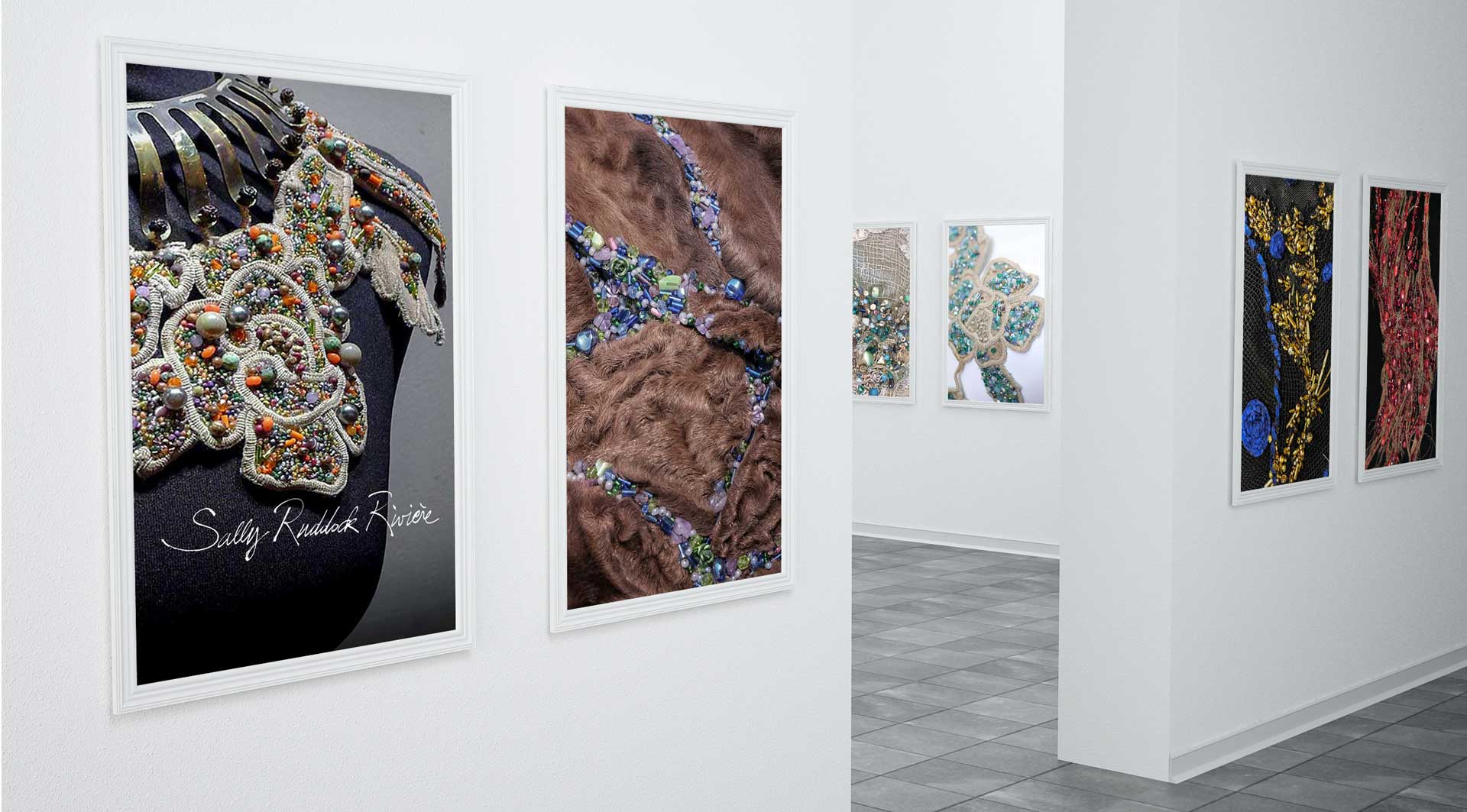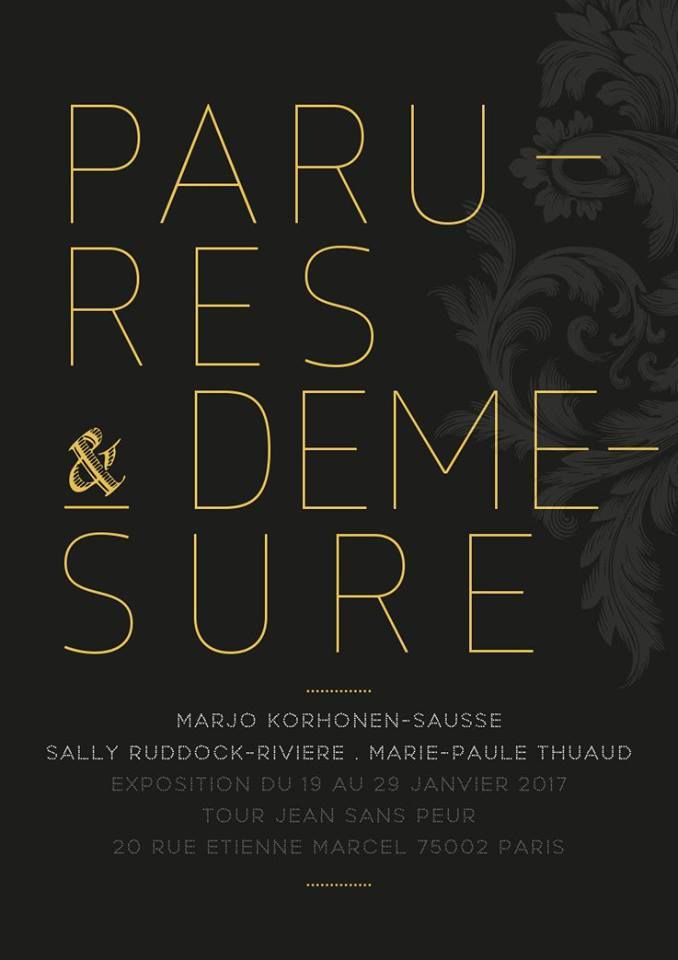
Exhibitions and Press
Download documents

Exhibitions and Press
Download documents
EXHIBITIONS
2017
- "Parures et Démesure"
La Tour Jean Sans Peur Gallery, Paris
2016
- "Les Artistes au Cœur de l’été" exhibition, Troyes (France)
2015
- "Aumônières contemporaines" at the Troyes Cathedral (France)
- "Parures" exhibition
– Galerie MADE, Paris 2015
– COP 21 Paris 2015
- European Heritage Days, Hôtel du Noirmoutier, Paris, 2015
- COP 22 Morocco, 2016
2010
- Salon du Chocolat, Paris
2007
- "Métamorphoses" exhibition, l’Hermitage, Paris 20e


How did you decide to become a fashion designer?
For as long as I can remember I wanted to design fashion. Like so many little girls I draped fabrics on my dolls, and my mother taught me how to sew, but to me it was an essential, intrinsic part of me, there could be no other choice.
What was your interest in fashion?
It was instinctive. I was so young when I knew that that was what I wanted to do, I didn’t question my motives. If I had to put it into words today I think I was attracted to the beauty of colour and composition, as if that had the power to set everything right…
How do you see the fashion industry today?
The fashion industry’s unlimited hunger for “faster and cheaper” bothers me, but now we are seeing the emergence of “conscious” collections, perhaps things are beginning to move. It’s difficult, as the fashion industry has created a monster, providing the public with new things constantly at prices that are impossibly cheap. The public needs to be (re)educated about the veritable cost of manufacturing, when all the sector’s actors are properly paid.
How did you come with the idea to start creating from recycling textiles?
I’ve been working with old and second-hand textiles since the 80s. I was drawn to them instinctively, I loved to imagine how they had lived and aged, how they had been loved and worn. I love beautiful materials, and at that time “vintage” was from the 1950s or even the 1930s and the fabrics and workmanship were often very beautiful. For me it seemed natural to “repair” these garments, rework the materials and breathe new life into them.
Do you think that a fashion product can have a second life, or as u call it a "repaired soul"?
Yes I truly do. But to do so, materials and workmanship must be of good quality. When time and love have gone into creating something it seems only normal that such pieces continue to exist. It’s true, in my work I often feel like I’m repairing souls, which in turn feeds my own soul.
How hard it is to offer an upgrading and/or a repaired creation to your customer?
If the work is good and the creation unique, there is no problem. It all depends on the quality of the work. Many people have beautiful things that hold personal meaning for them they would love to be able to wear again, perhaps differently or even in another form but can’t because the material has deteriorated or needs repair. Or they want to be able to wear a memory, like an old-fashioned keepsake. I’ll never forget the day an old man stopped me in the street to tell me that the necklace I was wearing (which had been a gift from my husband) had belonged to his wife. He seemed happy and at peace to see it being loved and worn again. How many things are thrown away because they are broken or torn? My work involves celebrating deterioration and marks of age, creating new beauty out of accidents, like the incredible Japanese art of Kintsugi, repairing porcelain with gold. In this way the piece is repaired, it may live again, its soul intact.
Do you believe that you can reduce the waste impact of disposing your product by making it recyclable or biodegradable?
Yes of course. Just as I use old materials, broken jewellery and found objects for my creations, another generation will use the beads on my work to create something new. And for the fashion industry it’s extremely important, there are far too many clothes manufactured every year, and how many end up as landfill?
Are the materials difficult to work with? What are the materials you reuse in your creations?
The materials I use come mainly from “vintage” fashion. I’ve thrifted all my life, so I have a pretty good collection of all kinds of materials. The hardest to find are beads as I use so many. I’m working on a piece at the moment using the diamantes from a 1920s dress I bought at a Drouot auction 20 years ago. Over the years I tried to repair the dress, which was impossible as silk ages badly, and even tried to give it to a museum. Nobody wanted it as it was in bad repair. So finally I decided to take off those incredible crystal beads one by one, to create something new.
What is your inspiration in your designs?
I’ve always been inspired by the beginning of the 20th century—the illustrator Erté’s designs, the costume and set designs by Bakst for the Ballets Russes, the clothes designed by Poiret and artist Mario Fortuny, dancers Isadora Duncan, Loie Fuller, Nijinsky… A period in time when women were finally shaking off their corsets and finding true freedom of movement.
Do you believe that this idea will bring the haute couture and ready to wear to a next level?
I like to believe so. It seems so obvious and necessary. The industry must continue to evolve and innovate in every sense of the word.
Do you think that governments should create regulations in the fashion industry in order to change the existing system?
Yes that would definitely help, but we all know that there will always be loopholes, and if manufacturers don’t change their way of thinking and acting, if they continue to think only in the short term about making as much money as possible, they’ll always find ways around any regulations. Everyone individually needs to examine their own conscience.
Are fashion brands working together on this?
I really can’t answer that, though I think the new generation is more capable of working together.
Do you think fashion is as responsible as any other form of art in changing the society?
Yes definitely. It’s the form of art that touches the most people, which is why it needs to be even more responsible than other forms!
What can you say us about women’s rights? What is the role of fashion in the message they should have for women, girls?
Fashion needs to encourage women and girls to be themselves and to be proud of who they are and what they look like. Things are changing in this direction too, models are less stereotyped and cosmetic brands in particular are now promoting the notion of being “yourself”. It’s a step in the right direction. Accepting ourselves the way we are is very difficult in today’s society where stereotypes reign. The role of fashion should of course be to make each and every woman feel beautiful in her own skin…
Interview Utopian Magazine Nov 2016
Network
